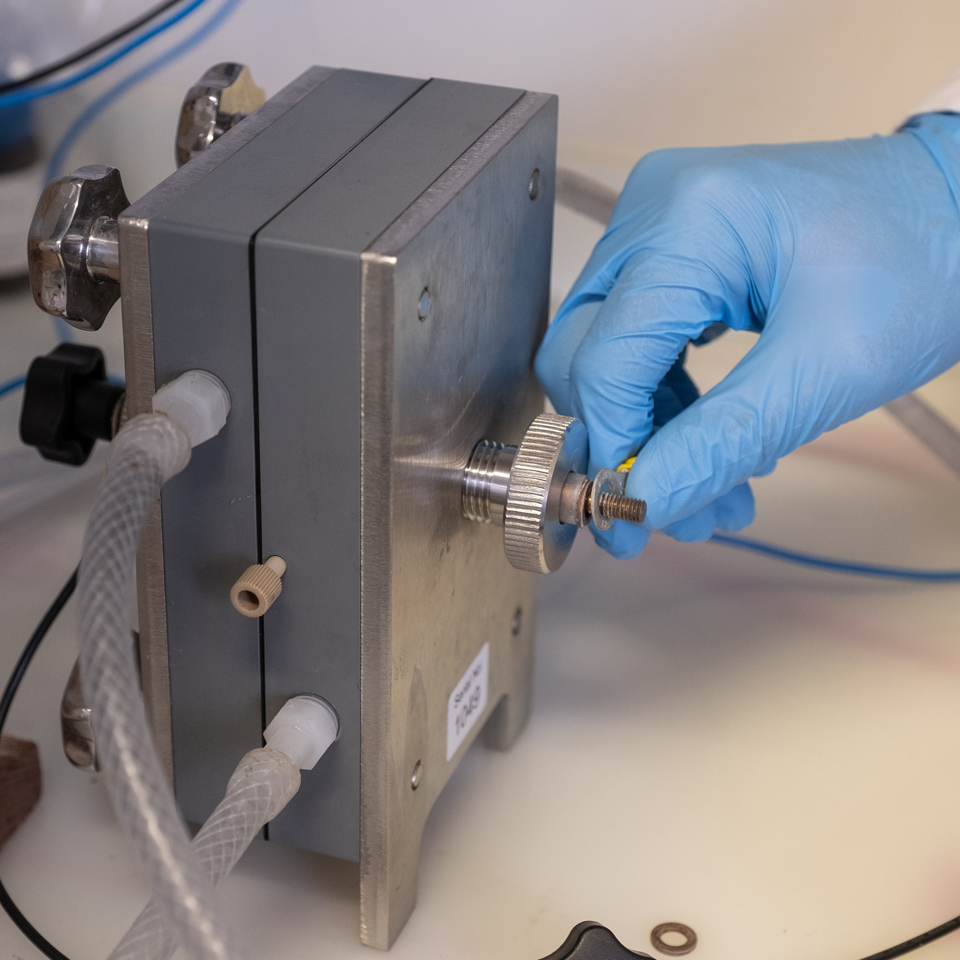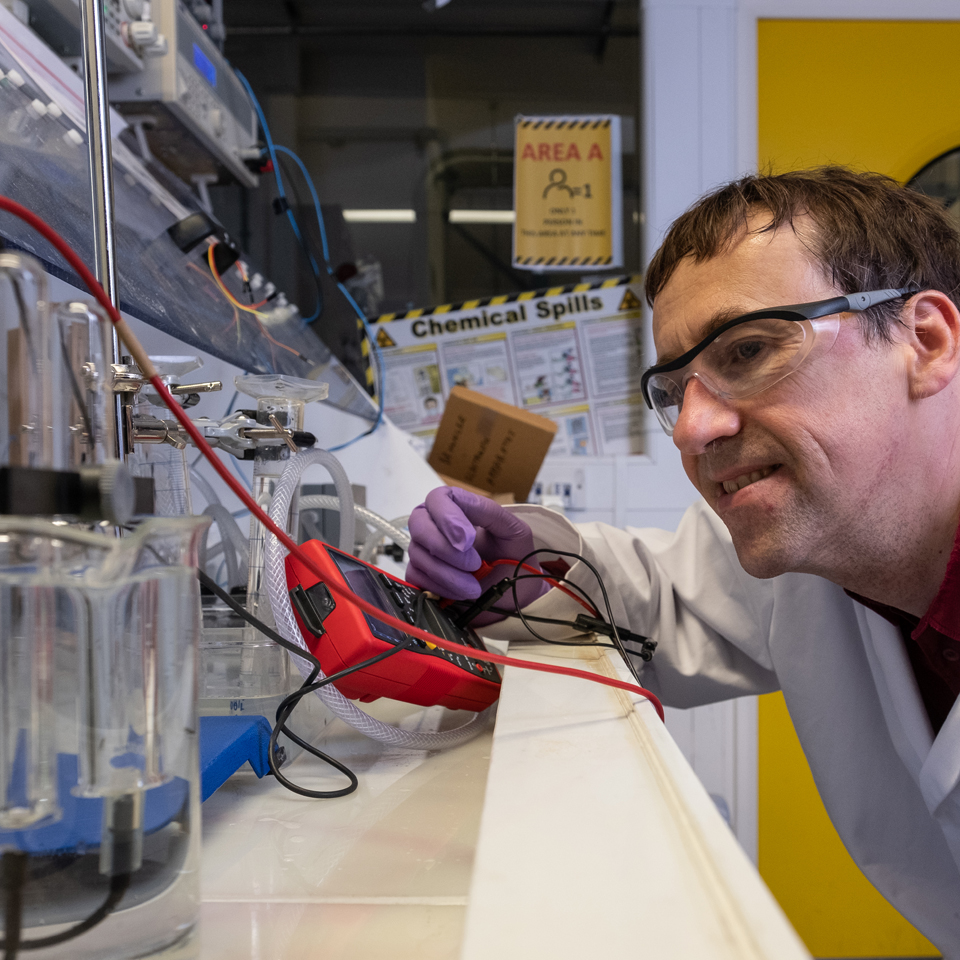Professor Dani Strickland
Professor of Electrical Power Engineering – Mechanical, Electrical and Manufacturing Engineering
Professor Dani Strickland is a power systems engineer who prefers hardware to software. Her research focus is the transition to low carbon energy. This includes modelling, designing, prototyping, testing and analysing technologies in a range of areas including measurement on the electricity grid to enable the smart grid transition, and controlling battery storage systems to support this change. She is part of the award-winning Aftrak project.
Preparing the grid for green energy
Smart grids enable the two-way flow of electricity and data. They offer improved efficiency and reliability of electricity supply and facilitate the better integration of renewable energy into the network. Capable of supporting more complexity, they promote optimal power consumption – reducing carbon emissions – and are essential for the transition to electric vehicles.
My aspiration is to push back the boundaries of knowledge – helping to produce new technologies that support the sustainability agenda.
My work falls into six related areas associated with the storage and distribution of power.
The first is around exploiting the potential of smart grids to make our energy consumption more efficient and less harmful to the environment. I’m helping to develop and prototype low-cost ways of measuring what’s happening in a grid as consumption fluctuates during the day and throughout the year.
As part of this, I’m doing some really innovative work with the Textiles Design Research Group, using conductive thread – wrapped around multi-conductor cables – to estimate loading.

I’m also conducting work around dynamic asset rating to assess safe and optimum current levels in the system to meet demand, increasing renewable generation via network reconfiguration, and the reduction of power losses. Meanwhile, I’m exploring frequency control – finding ways to use power electronics to ensure the grid copes – and avoid blackouts – when there are faults on the system.
Another element of my research looks at electrical energy storage with new and second life batteries. The latter are batteries from electric vehicles. After about 10-15 years, they still have a capacity of about 75% – not enough to power a vehicle, but ample to play a useful role in ensuring grid stability and resilient power supply. My work here includes monitoring, lifespan prediction, cell balancing, control, hybridising, and sorting and grading.
I’m also involved in some really exciting developments around Battolysers – not a high-tech weapon in Batman’s arsenal, but a device that stores energy while producing low-cost hydrogen from renewable power. This is a possible low cost alternative to electrolysers without the expensive metals.
Our growing reliance on AI and machine learning is having a big impact in my field. As things become ever more connected, we’re developing new ways to monitor and control smart applications to make domestic and commercial energy use more efficient and sustainable.
My aspiration is to push back the boundaries of knowledge – helping to produce new technologies that support the sustainability agenda.

In addition to my research and teaching, I sit on several Institution of Engineering and Technology (IET) panels which have produced Codes of Practice for Low Voltage Direct Current Power Distribution in Buildings and for Energy Storage.
These documents sit alongside the IET wiring regulations and provide specialist information for developers and users to ensure safety and competency. I’m also Vice Chair of two IEEE standards P120 and P1459 which are currently undergoing major revisions.
Another exciting project I’m involved in is Aftrak – an innovative microgrid solution that integrates energy access with electric agriculture and deep bed farming.
The system boosts crop yield, providing better income security to millions of African smallholder farmers and their communities while ensuring their access to sustainable electricity.
We began developing Aftrak in August 2022, and were thrilled to be named winners of the US$1 million Milken-Motsepe Green Energy Prize in May 2024.
Since then, we’ve established a limited company to develop the technology and are raising investment to deploy the solution across Malawi where 89% of the population lives without access to electricity.
Over the years, I’ve been privileged to work on a range of projects alongside some really pioneering people across academia and industry including Project FALCON and KlikPower. I’m currently working with colleagues at the University of Warwick to explore how advanced lead batteries can support electricity grid resilience.
These partnerships challenge my thinking and help me raise my game to find innovative solutions to challenges posed by the transition to more sustainable power generation and storage.

My research journey
At 18, I went to Heriot Watt University in Edinburgh and graduated with a BEng in Electrical and Electronic Engineering followed by Cambridge University for my PhD, specialising in electrical machines, most specifically induction motors.
Having secured a Research Associate role, I stayed in Cambridge for about another year before moving into industry where I worked at the PowerGen (then E.On and currently Uniper) Power Technology Centre as an Electrical Power Engineer.
I had some time away from work when my children came along, but returned to academia in 2002 – joining The University of Sheffield as a part-time lecturer. During this time, I was lucky enough to be awarded a Daphne Jackson Fellowship with Rolls-Royce.
A year into my fellowship, I was offered a position at Rolls-Royce Fuel Cells Systems as an Engineer. I was promoted to Leader of the Electrical Power and Controls Team – a post I held for about five years.
In 2010, it was time for a change, and I secured a lectureship at Aston University where I stayed until 2017 when I came to Loughborough.
I thoroughly enjoy my research and the challenges it poses, but working part-time – as I have for about the past 20 years – suits me. My current role allows me the flexibility to manage my other commitments and strike a good work-life balance.
